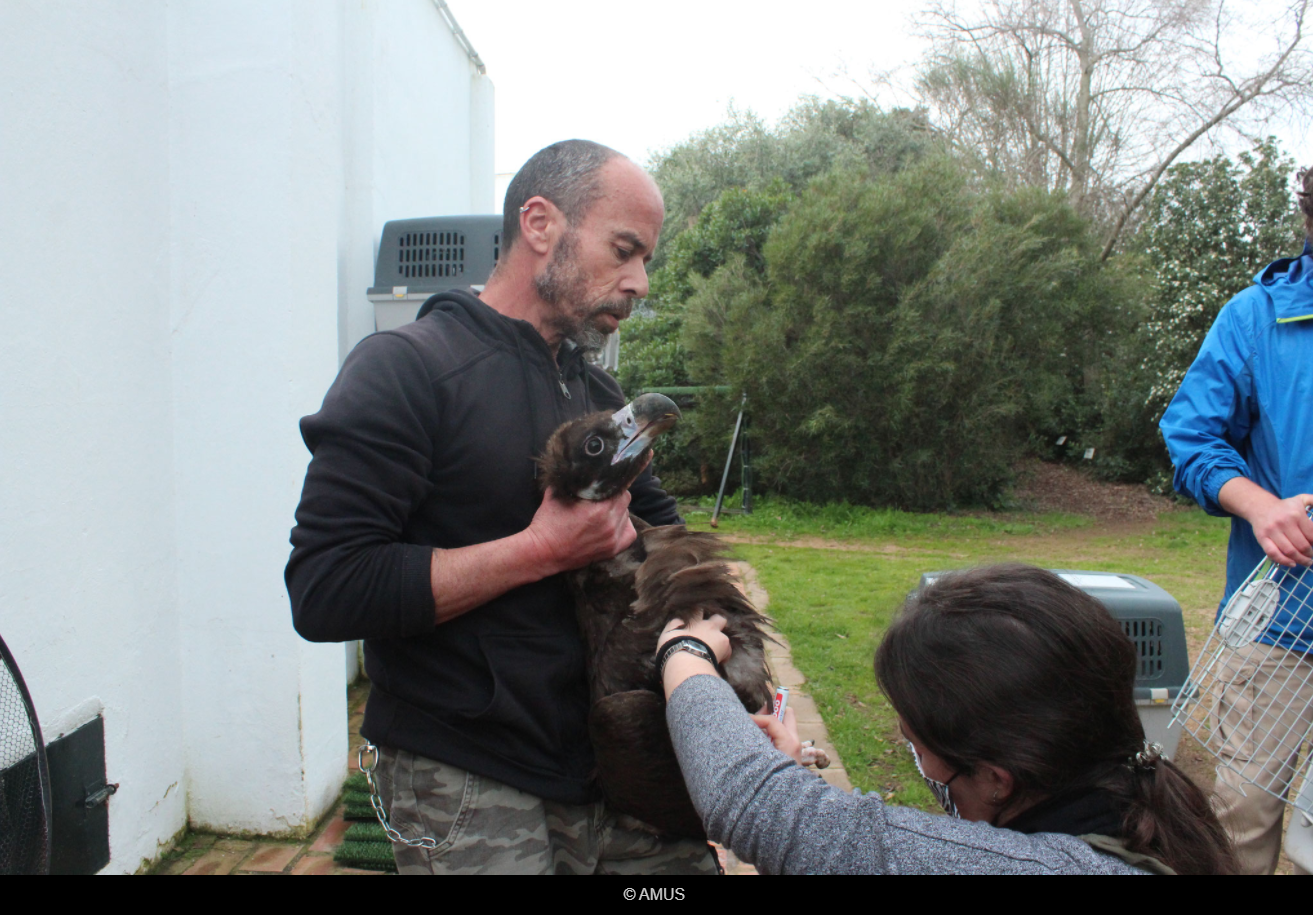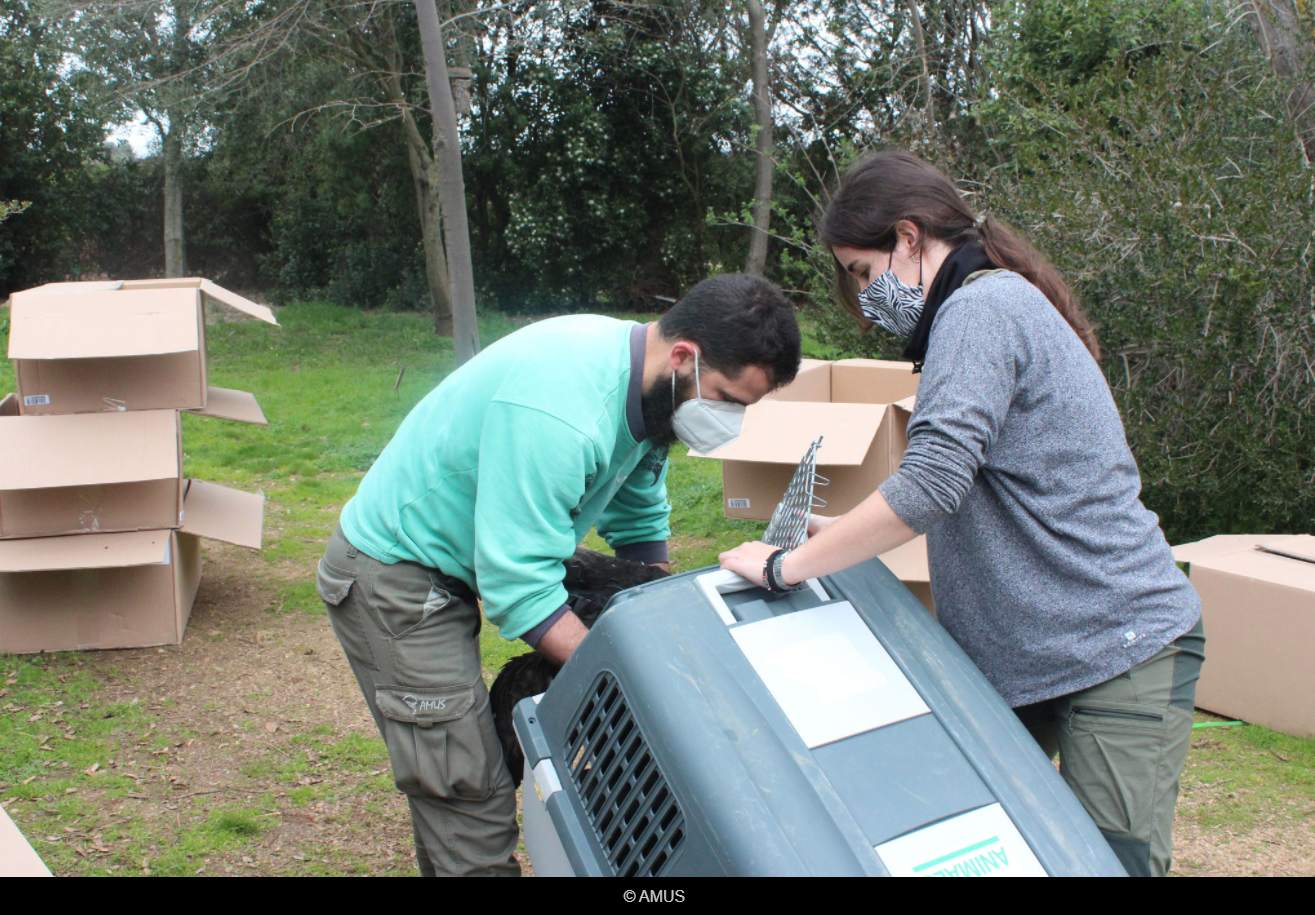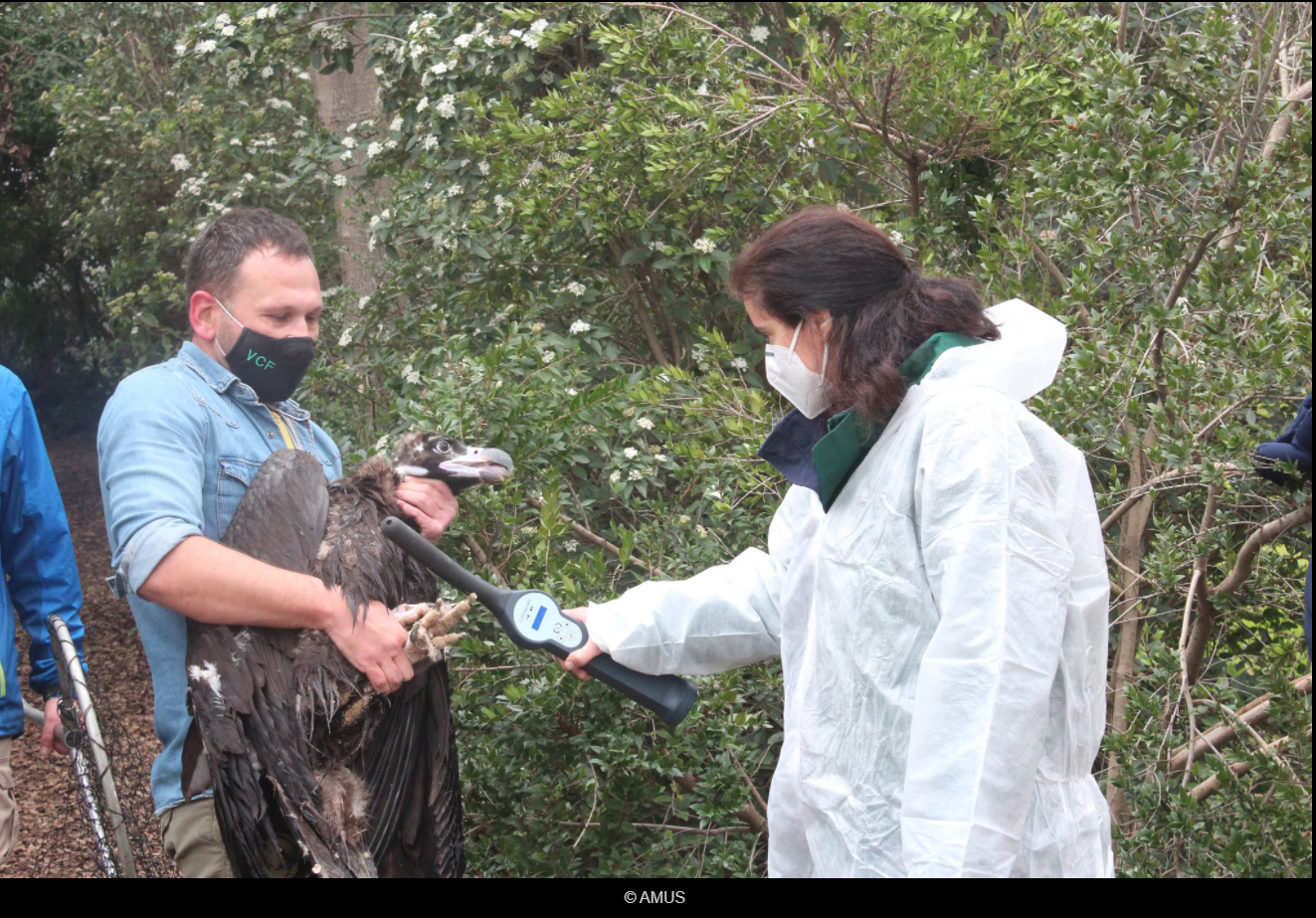
Twenty-two Cinereous Vultures rescued and rehabilitated in Extremadura start their long journey to Bulgaria today, during the largest-ever transport of its kind, with the goal to reintroduce the species.
The journey from Spain to Bulgaria begins
Every year, several Cinereous Vultures that hatch in the wild in Extremadura, Spain, need rescuing after suffering from malnutrition and weakness. These young and inexperienced birds get a second chance at life as they are retrieved and transferred to the wildlife rehabilitation centre of Los Hornos, where the dedicated team nurses them back to health for their eventual release into the wild. Some of these birds even get the opportunity to contribute to the conservation of their own species beyond Spain!
For the past few years, the Junta de Extremadura has been donating several recovered Cinereous Vultures to the Vultures Back to LIFE project, which aims to reintroduce the species in Bulgaria. This year, they donated an additional 22 individuals, bringing the total to 59 Spanish Cinereous Vultures secured for this project. After these birds made a recovery, they entered the wildlife rehabilitation centre AMUS that has specialized facilities to spend a pre-transport quarantine period and undergo some further tests.
Finaly, today, on 1 Match 2021, the Cinereous Vultures were ready for the transport, which was coordinated and organized by the Vulture Conservation Foundation (VCF). This morning, they left Extremadura heading to Bulgaria by land in a vehicle suited for their comfort and safety. Over the next three days, they will travel 4000 km, passing through France, Italy, Slovenia, Hungary and Romania, before arriving at their destination. Once they arrive, the project team will re-examine their health and place them in acclimatization aviaries to get used to their new home before the Green Balkans and Fund for Wild Flora and Fauna release them into the wild in the coming months.

Reintroducing the Cinereous Vulture to Bulgaria
The Cinereous Vulture’s foreseen return to Bulgaria is only possible thanks to Spain’s support, which has the world’s largest population of this species. Home to around 2,500 breeding pairs, with more than half of them in Extremadura, Spain generously donates certain birds to reintroduction projects in Europe, including Bulgaria.

The LIFE-Funded Vultures Back To LIFE project launched in 2015 to bring the extinct species back to Bulgaria. Due to several threats such as habitat loss, wildlife poisoning, agricultural intensification, food shortage, and illegal shooting, the Cinereous Vulture population depleted across the Balkans, and today the only remaining natural breeding colony exists in the Dadia National Park in Greece. The project’s ultimate aim is to establish a nesting population of Cinereous Vulture in Bulgaria by improving conditions, limiting threats, enhancing national capacities, and releasing birds to restore the connections between the Greek and Crimean sub-populations and to these in the Alps and the Iberian Peninsula, facilitating the re-creation of a much more sustainable Pan-European population.

Thanks to the project’s efforts, last year, two reintroduced Cinereous Vultures coming from Spain formed a pair in Bulgaria for the first time since the species extinction, signifying hope for the return of Europe’s larger raptor to the country.
To stay tuned with the project and the 22 Cinereous Vultures, sign up to the VCF’s newsletter!














